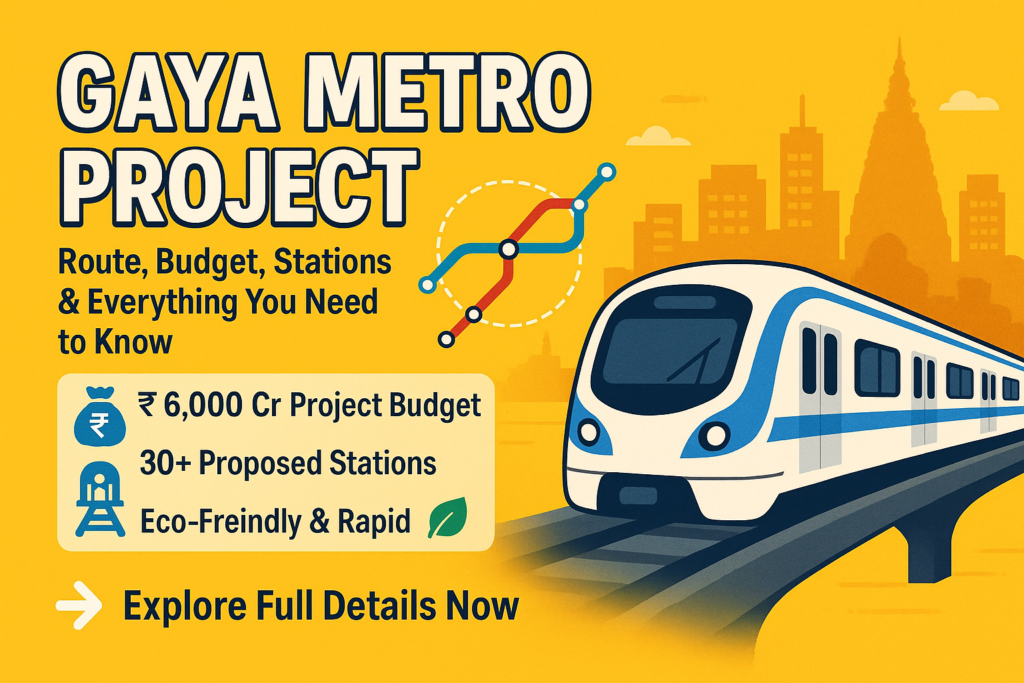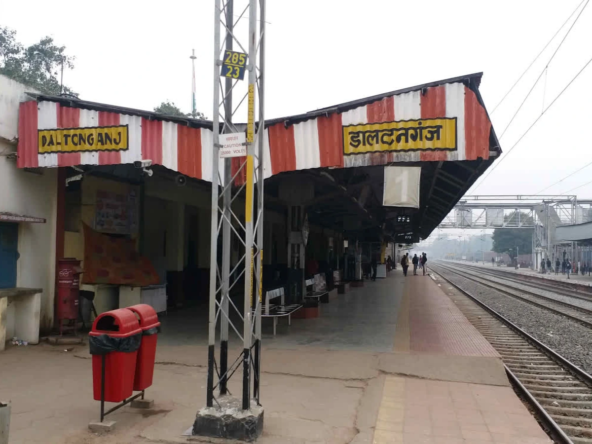
Gaya Ji, a city steeped in spiritual significance and historical resonance, is on the cusp of a monumental transformation. For centuries, it has drawn pilgrims and tourists to its sacred sites, most notably Bodh Gaya, the place of Buddha’s enlightenment. But soon, the city will add another feather to its cap: a modern, efficient metro rail system. The Gaya Ji Metro Rail project is not just an infrastructure endeavor; it’s a vision for a future where connectivity, convenience, and sustainable development intertwine, redefining urban mobility for residents and visitors alike.
This ambitious undertaking promises to alleviate traffic congestion, reduce pollution, and enhance the quality of life, positioning Gaya Ji as a leading Tier-2 city in India. If you’re wondering about the Gaya Ji Metro route, Gaya Ji Metro stoppage details, or the overall Gaya Ji Metro project impact, you’ve come to the right place.
The Vision: Why Gaya Ji Needs a Metro
As a rapidly growing urban center and a global pilgrimage destination, Gaya Ji faces the inevitable challenges of increasing population and vehicular traffic. The existing road networks, while vital, are becoming increasingly strained. This impacts not only daily commuters but also the millions of tourists who visit annually, affecting their travel experience and the city’s overall image.
The Gaya Ji Metro project addresses these critical issues head-on. By introducing a high-capacity, environmentally friendly public transport system, it aims to:
- Decongest Roads: Shift a significant portion of daily commutes from private vehicles to the metro, drastically reducing traffic jams and travel times.
- Boost Connectivity: Provide seamless and rapid transit between key residential areas, commercial hubs, educational institutions, and, crucially, major pilgrimage sites like Bodh Gaya.
- Reduce Pollution: Offer an eco-friendly alternative to fossil fuel-powered vehicles, contributing to cleaner air and a healthier urban environment in a city where air quality has been a concern.
- Spur Economic Growth: Create new employment opportunities during construction and operation, and drive commercial activity along metro corridors.
Unveiling the Gaya Ji Metro Route and Stations: A Detailed Look
The Gaya Ji Metro Rail project is designed to cover a substantial Gaya Ji Metro rail distance of 36 kilometers, making it one of the longest metro routes planned for a Tier-2 city in Bihar. The network will feature 28 strategically located stations across two distinct corridors, ensuring comprehensive coverage of the city’s vital areas.
Corridor 1: The North-South Lifeline (IIM Bodh Gaya to Sun City Chakand)
This primary corridor, stretching approximately 22.60 kilometers, is set to be the backbone of Gaya Ji’s metro system, connecting some of its most crucial landmarks. It will feature 18 metro stations, linking the international airport, the revered Bodh Gaya, and the bustling Gaya Ji Railway Station.
Key Gaya Ji Metro stoppage points along Corridor 1 are expected to include:
- Gaya Ji Airport: A vital link for both domestic and international travelers.
- Gaya Ji Railway Station: A major interchange point for rail passengers.
- IIM Bodh Gaya: Connecting the prestigious management institute.
- BIADA: Linking the Bihar Industrial Area Development Authority.
- Gaya Ji College: Catering to the large student population.
- Sun City Chakand: The proposed endpoint, extending connectivity to growing residential complexes.
Corridor 2: The East-West Connector (Paharpur to Lakhanpur)
The second corridor, spanning approximately 13.48 kilometers, will serve as a crucial East-West link, encompassing 10 metro stations. This route is designed to connect significant areas including BIPARD (Bihar Institute of Public Administration & Rural Development) and Vishnupad Temple.
Key Gaya Ji Metro stoppage points along Corridor 2 are expected to include:
- Paharpur: Offering connections to new development zones.
- Kodihera-BIPARD: Linking a major administrative and training institute.
- Vishnupad Temple: Enhancing access to this revered spiritual site.
- Lakhanpur: The proposed endpoint, where a second service station will be located.
These routes have been carefully planned after extensive surveys by RITES (Rail India Technical and Economic Service) in collaboration with the district administration, incorporating feedback from public representatives and local residents to ensure maximum utility and coverage.
Project Timeline and Financials: Moving Towards Operation
The Gaya Ji Metro project is progressing steadily. Preliminary survey work has been completed, and the detailed project report (DPR) is under review. Construction is anticipated to commence in late 2025, marking a pivotal moment for urban development in Gaya Ji. The estimated operational start for the Gaya Ji Metro rail is projected by 2028, a testament to the accelerated pace at which Bihar is embracing modern infrastructure.
While the exact final cost will be determined post-DPR approval, initial estimates for the overall Gaya Ji Metro project hover around INR 6,742 crore. This significant investment underscores the Bihar government’s commitment to transforming Gaya Ji’s urban landscape and improving its transit system.
The Ripple Effect: Beyond Just Transport
The impact of the Gaya Ji Metro Rail project extends far beyond simply moving people from one point to another.
Economic Revival and Real Estate Boom
The construction phase will generate thousands of direct and indirect employment. Once operational, the metro system will create permanent jobs. Furthermore, improved connectivity will attract new businesses, spur commercial development around Gaya Ji Metro stoppage points, and contribute to the growth of various sectors. Areas along the Gaya Ji Metro route are expected to witness significant appreciation in property values. Residential properties near Gaya Ji Metro stoppage points will become highly sought after due to improved accessibility, attracting both homebuyers and investors seeking long-term gains.
Environmental Sustainability and Tourism Enhancement
The Gaya Ji Metro offers a sustainable solution by encouraging a shift from private vehicles to electric metro trains, significantly reducing carbon emissions. This contributes to a cleaner, healthier Gaya Ji. For the millions of pilgrims and tourists, the metro will dramatically improve the travel experience. Faster, more comfortable travel between the Gaya Ji Airport, Gaya Ji Railway Station, and key religious destinations will be a game-changer, potentially increasing visitor numbers.
Conclusion: Gaya Ji’s Future, On Track
The Gaya Ji Metro Rail project is more than just a transportation upgrade; it’s a catalyst for the city’s holistic growth. From boosting the economy and improving environmental quality to enhancing the daily lives of its citizens and elevating its status as a global spiritual hub, the metro is set to put Gaya Ji firmly on the map as a modern, dynamic urban center.
As the construction begins and the city prepares for this monumental leap, the anticipation builds. The Gaya Ji Metro stoppage points will become new hubs of activity, and the Gaya Ji Metro route will weave a path towards a more connected, prosperous, and sustainable future. Get ready, Gaya Ji – your metro is coming!




